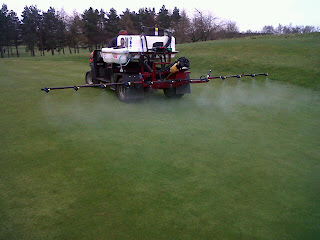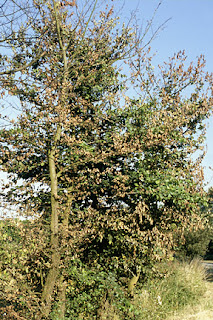Since my last course update the greens have been aerated with 8mm diameter tines and lightly top-dressed with sand.
To help strengthen the sward and make it more resistant to stress and disease, an application of liquid iron has also been applied.
 |
| Liquid Iron Being Sprayed |
Planned Work - Now that soil temperatures are heading in the right direction, the greens will shortly receive an application of fertiliser; this will promote some leaf growth and assist in smoothing putting surfaces.
In the coming weeks, we will continue to aerate with 8mm diameter tines and top-dress weekly with sand, this will encourage root development and help stimulate soil microbe activity.
Greens 17 & 18, still have significantly high levels of thatch and will be hollow tined with slim 6mm hollow tines this week. Removing some of the surface thatch and top dressing with sand will assist in breaking down the existing thatch layer and help firm putting surfaces.
Greens Height of Cut 5.5mm
Tees - The tees have recently all been hollow cored with 12mm diameter tines, this process helps relieve soil compaction, improves root development and assists further break-down of the thatch layer. We have also applied a Nitrogen/Potash based fertiliser to promote growth and enhance recovery. The tees have also been top dressed with sand to back fill the holes and to help restore surface levels.
Current Soil Temperature 8C
















